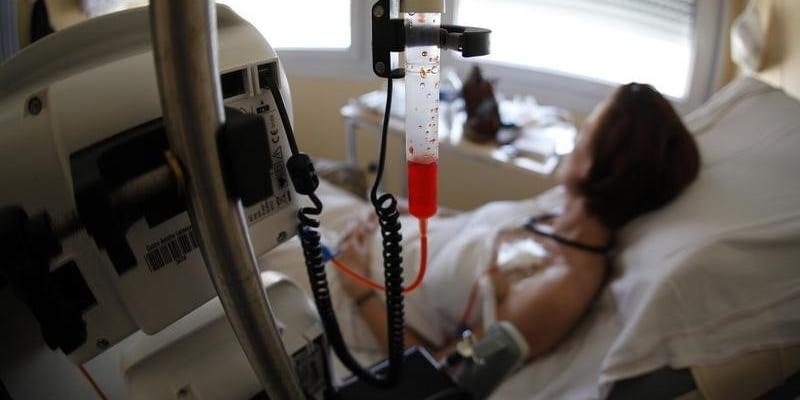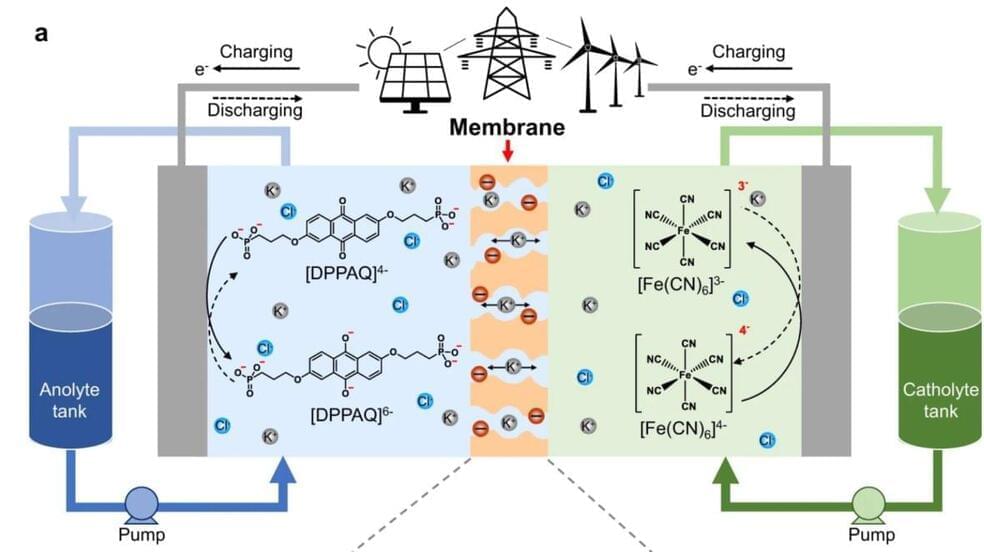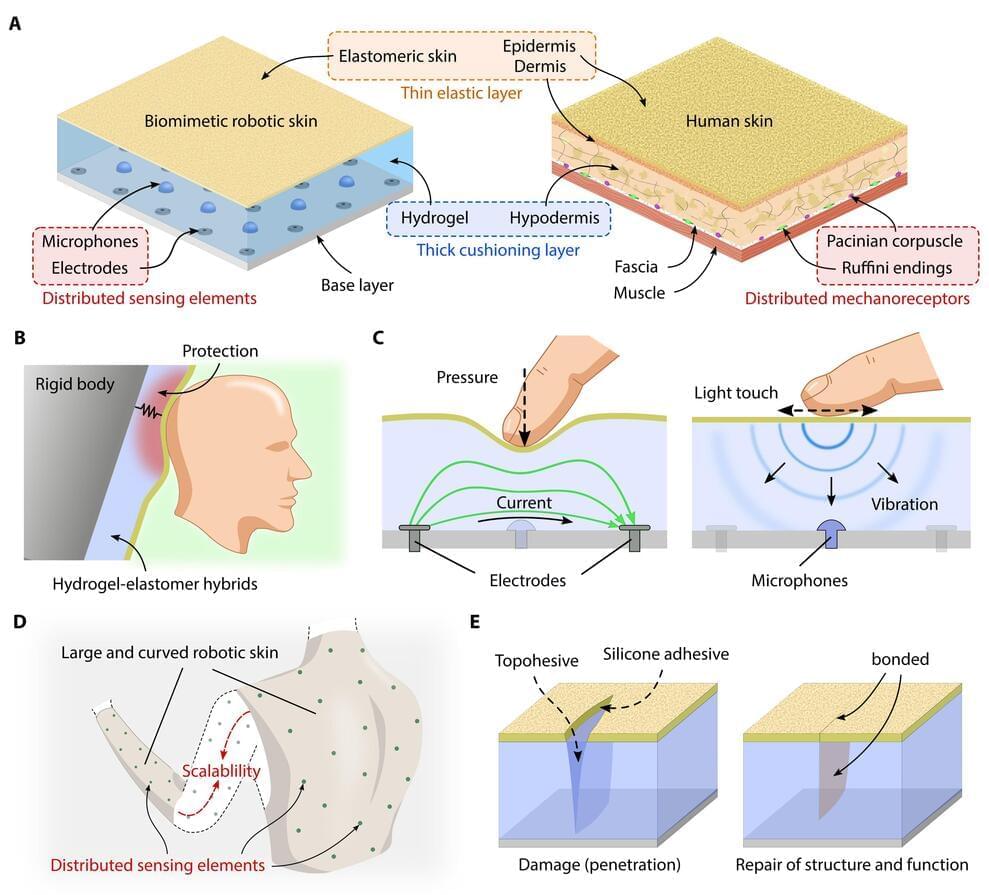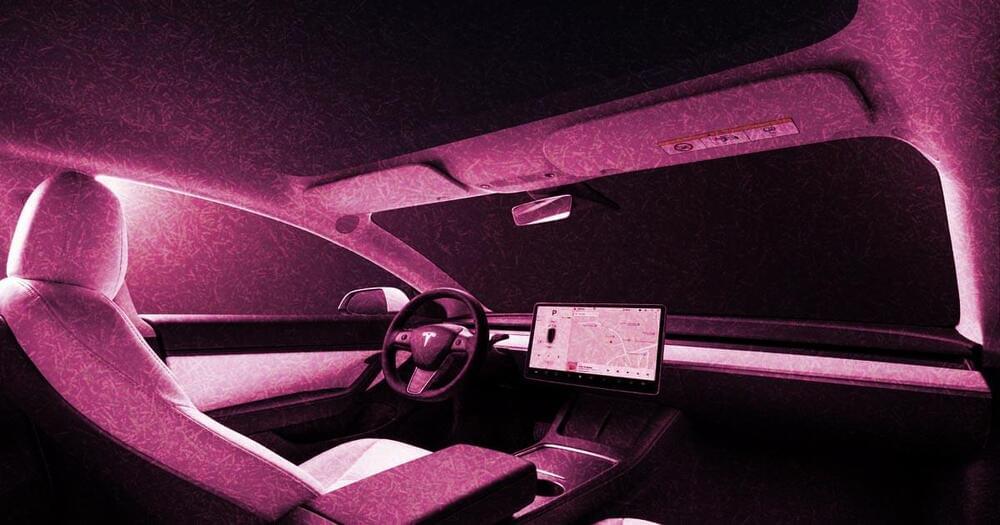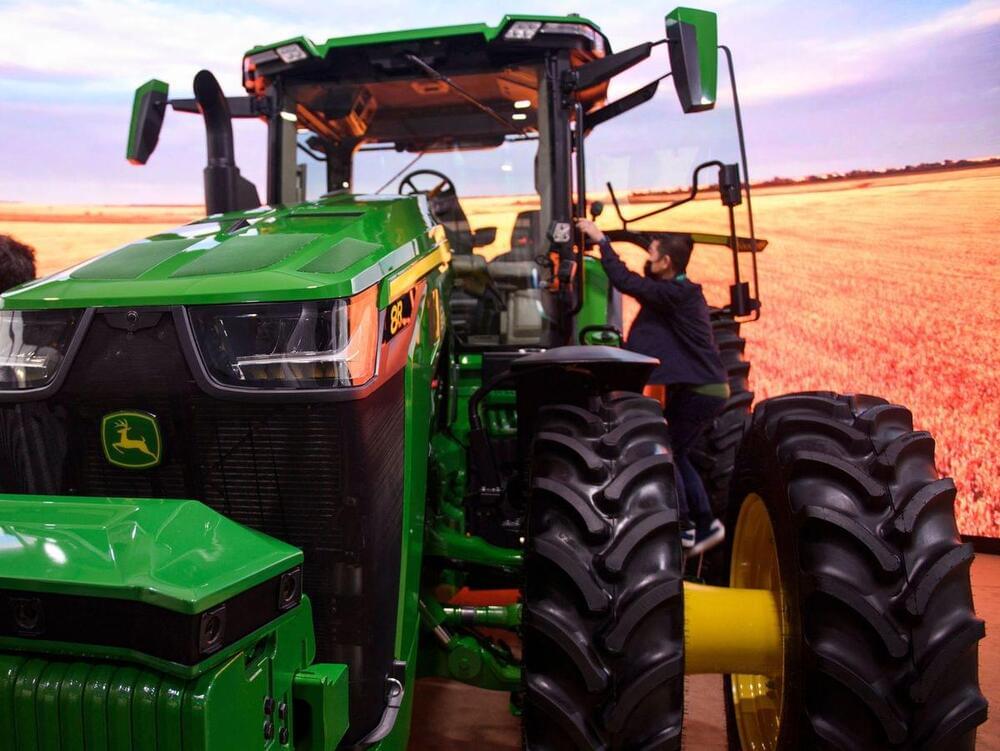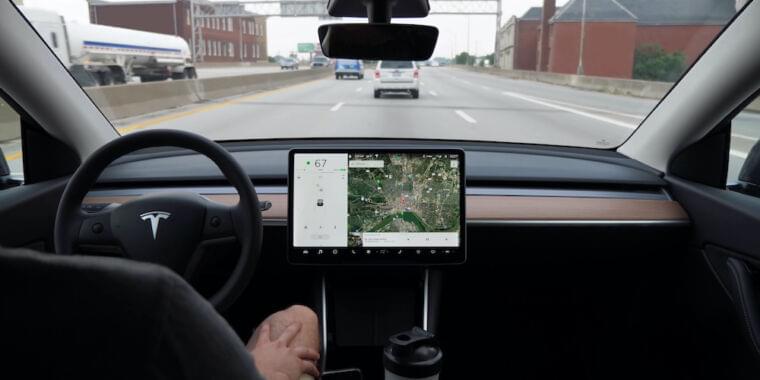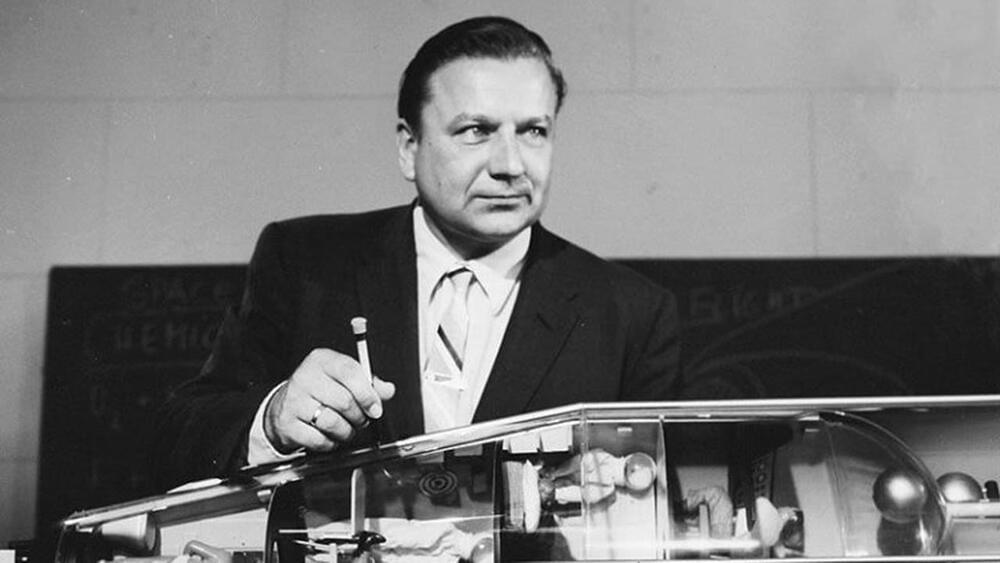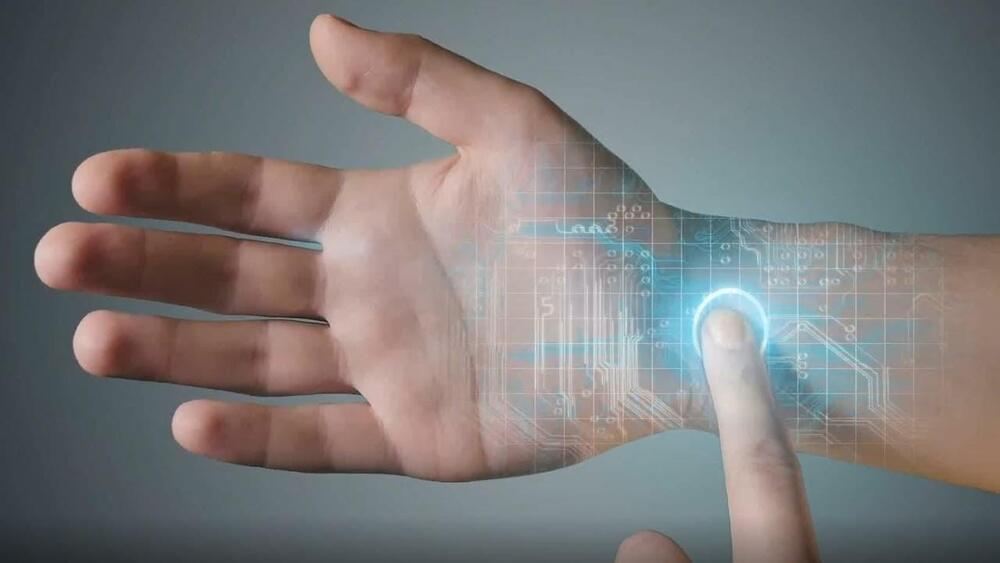A new drug therapy for breast cancer helped stop tumors from growing for twice as long as traditional chemotherapy, adding months to patients’ lives.
UK scientists have designed a new type of aqueous organic redox flow battery based on ion-exchange membranes made of a polymer of intrinsic microporosity. The battery showed a very low-capacity decay rate of 0.0335% per day for 2,100 charge-discharge cycles.
A team of researchers at Korea Advanced Institute of Science and Technology, working with one colleague from MIT and another from the University of Stuttgart, has developed a biomimetic elastomeric robot skin that has tactile sensing abilities. Their work has been published in the journal Science Robotics.
Roboticists continue to work on improving robot abilities and to make them more human-like. In this new effort, the researchers gave a robot arm the ability to detect such sensations as a pat, tickling, wind, or something stroking its surface. They accomplished this by partially imitating human skin.
The new robot skin is multi-layered, like human skin, to allow for different functions. The top layer is made of a rubber-like polymer resembling human skin. Beneath that, the researchers added a hydrogel to imitate the human epidermis. They chose a hydrogel because it not only deforms when pressed, but jiggles when bumped. By embedding sensors to detect these reactions, the skin is able to sense things like a finger press by monitoring the pressure of the hydrogel and the direction of its movement. If something taps against it, the system senses and measures ripples in the hydrogel to gauge what the tap felt like.
To capture the information that a brain contains, you need to cut it into billions and billions of slices.
Žilvinas DeveikaIt’s much sooner than that. My prediction (that is almost 10 years old now) of an “early” appearance of a strong AGI is 2029. I am completely sure that it will either emerge or will already be there in 2030s.
24 Replies.
Marc O MonfilsAnd what strategies do we have in place to guarantee humanity’s continued relevance in the era of super intelligent machines?
Empathy? Never saved any tribe in the past…
Human services and interaction? For what, to keep our irrelevance engaged?… See more.
5 Replies.
View 9 more comments.
Elon Musk Alarmed
Posted in Elon Musk
Elon Musk tells customers not to use Tesla’s recirculation mode because it spikes carbon dioxide levels in the car cabin.
Machines bristling with cameras and controlled by artificial intelligence are bringing supernatural precision to weeding, harvesting and fertilizing.
You may want to think twice before giving the parking attendant your Tesla-issued NFC card.
During my research, preparing my next presentations, i found this beautiful speech by Krafft Ehricke, in 1984, before he passed away.
Every single word is a precious teaching, a beautiful lecture on natural philosophy.
Ehricke was discussing against the claimed “limits to growth\.
The great space visionary Krafft A. Ehricke gave this comprehensive presentation on the industrialization and settlement of the Moon at the “Lunar Bases and Space Activities of the 21st Century” conference, held Oct. 29–31, 1984, at the National Academy of Sciences, Washington, DC.
Ehricke’s accompanying paper can be found here: http://www.lpi.usra.edu/publications/books/lunar_bases/LSBchapter12.pdf.
New artificial skin for bionic arm or AI robot | breakthrough photonic chip processes 2 billion images per second without memory device.
AI news includes new artificial skin to let AI robot, bionic arm or prosthetic limb feel with extreme touch sensitivity. New photonic chip allows AI to process and classify 2 billion images per second without needing storage device.
AI News Timestamps:
0:00 AI Robot Artificial Skin For Bionic Arm.
3:28 Photonic Chip Processes 2 Billion Images / Second.
Learn more about the future of decentralized AI here:
SingularityNET AGIX Website — https://singularitynet.io/
Developer Documentation — https://dev.singularitynet.io/
Publish AI Services — https://publisher.singularitynet.io/
AGIX Community Telegram — https://t.me/singularitynet
AGIX Price Chat Telegram — https://t.me/AGIPriceTalk
#AI #Robot #Bionic
